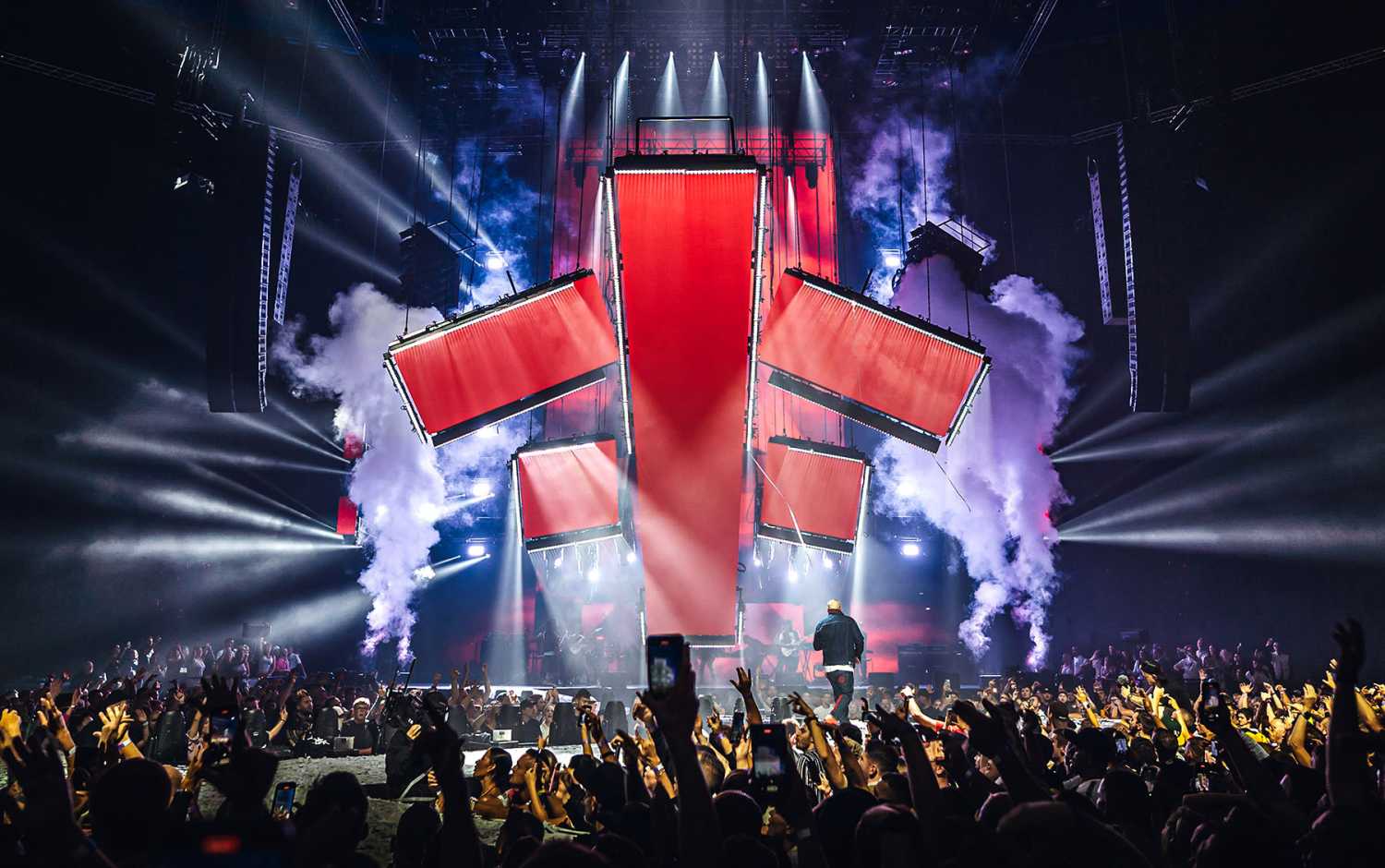Kinesys moves it for Kontrafakt
- Details

Kontrafakt was celebrating two decades at the cutting edge of rap, so Martin, the artist and event producers Mafia Records were on a mission to “present the biggest and most memorable show possible” in that venue, explained Martin, outlining his ambitious visual aesthetic for which he also leaned heavily into Kinesys automation.
The specialist technical discipline of automation was utilised to dramatically shift the architecture and vibes of the performance space throughout the show, all the time ensuring that the artist, who has a great connection with his fans, remained right at the centre of the action.
Martin asked automation specialist Kosma Szostak and his company Showstak, based in Poland, onboard to assist in realising this epic element of the production, which was delivered with the help of 48 x one ton and half ton Kinesys motors. These were a mix of Apex hoists and EXE hoists running with Kinesys Elevation 1+ drives, with inbuilt load cells plugged into a Kinesys Libra PRO system and safety-under-load / overload cut offs linked to a Kinesys Mentor 4 unit. All the hoists were programmed and run via Kinesys Vector control.
With a set up window for the full production of only nine hours ahead of the first show, it was imperative that the automation was practical, achievable, and reliable, and Kinesys provided an excellent solution.
The show concept featured three main moving elements. The first was a 14m-long by 10m-wide flown catwalk which morphed - with the addition of four flanking pieces or pods - into a massive double headed cross, mimicking the Kontrafakt logo.
The catwalk flew in and out and tilted in various directions at strategic points through the show, above a right-angled dual runway below, with two catwalks protruding over 25m into the audience in two directions, and both ends shaped into double headed crosses.
The flying catwalk was designed in conjunction with the four flanking ‘cross’ section set elements on the upstage sides.
The long catwalk section was flown and moved using six Kinesys Apex 1250kg motors with pick up points carefully positioned to enable equal load distribution to maintain stability and maximise the movement control.
“A significant advantage of the Kinesys automation system in this context was its capability to manage load distribution effectively while tilting the catwalk,” explained Kosma. This was vital as the catwalk underwent the most dynamic tilting movements. The load distribution also needed meticulous control to ensure the safety of the artist as well as maintaining the overall integrity of the structure.
The four cross pods were each flown with four EXE 500kg and 1000kg motors with Kinesys Elevation 1+ drives, giving a total of 16. The upstage ones were loaded with four moving lights each and all four pods were outlined with the Tetra2 LED battens. The structures were constructed by Czech companies Alunad and Black Stages.
Each lighting truss was rigged on two EXE half ton / Kinesys Elevation 1+ motors, making up the total of 48 hoists used in the system.
Automation was programmed by Kosma and Maksymilian Łempicki and run by Maksymilian, with all the cues - over 16 in total - crafted by Martin as he developed the look, style, and narrative arc of the show for the artist, his band, and special guests.
Chief rigger for the shows was Jan Springet, and Simon ‘Captain’ Howdy chiefed the Showstak automation crew of six and was the Vector console assistant.
All production departments were co-ordinated and overseen by Kontrafakt’s production manager, Cyril Hořánek, and Martin’s design assistant for the project was Michal Azozda.
















